I used to work in TV news, so I use techiques learned there, like your 10 second rule, etc. However, in taking video of my son (just finished kindergarten), I find it hard to figure out when to turn the camera on and off for the 10 seconds due to the unpredictable nature of what he (or others around him) may do. I may miss the best stuff! Any tips on how to minimize footage and reviewing time while maximizing good stuff?
–Kirsten in Tallahasee
Knowing when to turn the video camera off is tough– especially when you’re the parent of the cutest child in the world. But if you shoot everything out of fear of missing something, you’ll end up documenting your son’s life in real time. Which means you’ll need another full lifetime to watch it.
Changing this behavior requires tough practice, especially for parents of young kids, but here’s what you have to do: Put the camera down and observe more with your eyes. If you try it, two interesting things will happen.
First, by watching your son and his friends more carefully you’ll develop an almost psychic sense of when something cute may happen, and you’ll end up catching more on video than you expect.
Second, even if you miss shooting some stuff, you’ll see it instead. For real, instead of through a little electronic screen. And memories of real life are worth a lot. Get comfortable that there will be many, many cute things to shoot in your son’s life, and sometimes things just happen without anyone documenting them.
Can’t do it? When you find yourself overshooting you must edit before you inflict this video on anyone else. Editing in this case simply means loading your video into the computer and chopping out all the boring parts. If you have trouble seeing what could possibly be “boring” about your son, imagine that this video is of someone else’s kid doing the exact same thing. Now hack away.
Keep your edited video down around 2 minutes (not a rule, just the likely tolerance cutoff for, say, your mother). Maybe add a little music. You’ll have a nicely put together video.
Bonus: Having to edit your own footage also develops your “knowing what not to shoot” muscles. You’ll naturally put the camera down more, knowing how much work it is to cut it later.
Thanks for the great question, Kirsten.
Do you have video insecurities? Want a critique on something you’ve done? The most “teachable moments” get answered here.
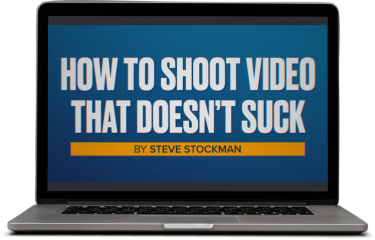
Get a free preview of the new video course!
Sample two lessons from our new video course free right now. No signup or credit card required!




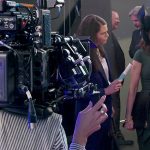

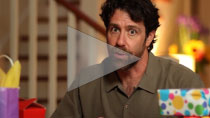
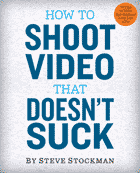


 Steve Stockman is a writer/ producer/ director in Los Angeles. How to Shoot Video That Doesn't Suck, available in 9 languages, is the best selling video how-to book in the world. You can find the updated edition from Workman Publishing wherever you get books, ebooks or audiobooks.
Steve Stockman is a writer/ producer/ director in Los Angeles. How to Shoot Video That Doesn't Suck, available in 9 languages, is the best selling video how-to book in the world. You can find the updated edition from Workman Publishing wherever you get books, ebooks or audiobooks. 
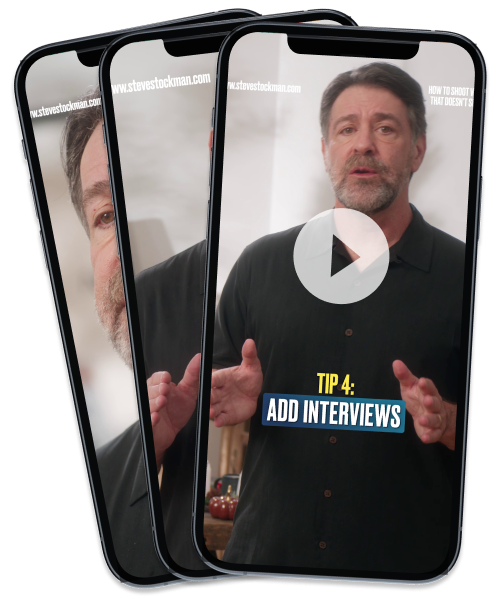
I heard your interview on the Bob Rivers Show in Seattle, Wa. I bought your book at Barnes&Noble that day. I'm reading through your website now (if it turns out that your entire book is here, I still won't return it). I've been shooting and editing (and creating crappy, unwatchable videos) for a decade (like it matters). I consider myself a "documentarian." My "excuse" is, I can't remember stuff. To your comments about this topic, that's my response. Unlike "normal" people, I don't remember what happened UNLESS I have the video of the entire event to review. (Is it true that only women remember everything?) Anyways, (yeah, I know, where's the f-ing question?????), what's changed in people that they can't watch "everything?" Why is our attention-span so short these days? What am I missing? Do books (that archaic form!) use the same story-telling style? Is film style the tail waging the dog, or is it the other way 'round? I feel like there needs to be a preface to your (worthy) recommendations. A psychological explanation for what's going on here. To validate your advice? Thanks. I feel like the $16 I spent for your book was worth it. I'm looking forwards to the journey. But I'm wondering about the destination.
In part, short attention span is biological. More than 1/2 our brain exists to process visual information. When we lived on the African plains, we spent a lot of time looking– for food, for enemies, for tribe, for mating opportunities. And we process visual information FAST. If you don’t give us new information often, we start to feel claustrophobic– danger (or food or sex) might be lurking, and we can’t see it! Cutting feeds our information needs– here’s some information CUT here’s some more CUT here’s some more… It keeps us feeling, in a way, safe.
The rest is learned– which is why movies cut today tend to be faster cut than the movies of 1945. We have a deeper understanding of film language. If you’re new at French, you speak slowly. If you’re skilled, much faster. Same with film.
As a filmmaker, you don’t have to cut at Rap Music Video pace to be interesting. Plenty of filmmakers don’t. You can have a film with a very slow style and long takes– take anything by Terrance Malick, for example, or Jim Jarmusch– BUT film was never about watching “everything”– and that’s one of the major points I’m trying to make. Even slow edits and long takes STILL reflect choices by filmmakers of what to show and what to leave out. They still show action– even if it’s slow action. It’s been that way since “The Great Train Robbery in 1903 invented editing.
As an artist, if you’re happy with your “show everything” approach to video, go for it. You’re in charge. But if you think your videos are “unwatchable” and you actually WANT more people to watch them, you need to shoot for, or edit for the action in shots– however fast or slow it may be.